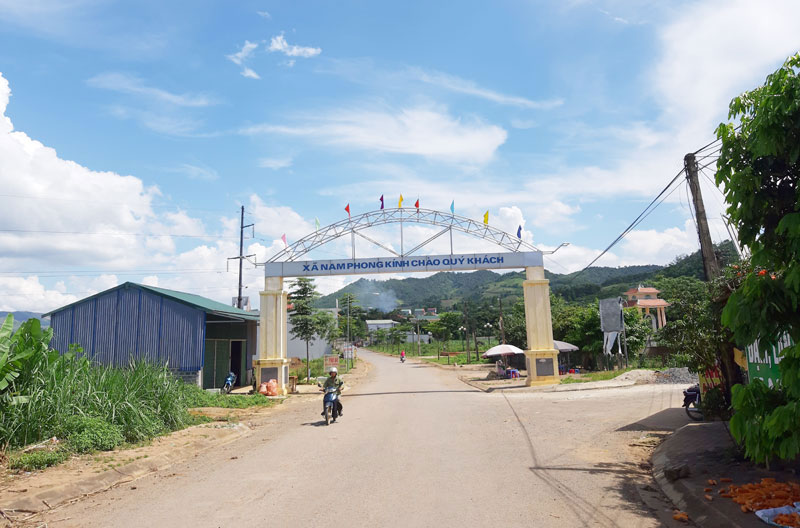
(HBO) – Infrastructure and living conditions in Nam Phong commune, Cao Phong district, have improved very much in the last few years.
Photo: Nam Phong commune’s infrastructure is improved to meet the demand for socio-economic development.
Nam Phong commune’s infrastructure is improved to meet the demand for socio-economic development.
Nam Phong was known as a commune that pioneered crop restructuring with the rice growing area reduced and the sugarcane growing area increased. Planting citrus fruit trees, afforestation, and animal husbandry are new ways for residents to increase their incomes.
Dinh Duc Chinh, chairman of Nam Phong commune People's Committee, said local authorities and people are united and actively building a new life. In 2016, the commune met the criteria to become a new-styled rural area. Since then, the commune has continued to maintain its recognition.
Residents are actively donating land to expand roads. They also keep houses and public work green, clean, and beautiful, creating an increasingly innovative rural look. Locals have donated land to open the road from National Highway 6 to the centre of the commune, and other internal roads. At the beginning of this year, the commune started the construction of a primary school, with an area of 9,400 sq.m in Tram hamlet. As many as 26 households agreed to move to make room for the school. So far, 16 classrooms have been built.
Chinh said that one of the most prominent achievements made in the commune is that it has solved environmental problems well. With support from the State, the commune built a garbage dump and incinerator. The commune established a group of three members who are responsible for collecting garbage twice a week and then carrying the waste to the incinerator for treatment. Along with that, the commune also promoted communication, calling on people to actively participate in environmental protection activities.
By now, the per capita income of the commune has reached 47 million VND/year. The commune’s poor households number has decreased to 13%.
The Department of Education and Training of Hoa Binh province held a conference on March 18 to review the performance of the "Safe and Happy School" Project and set out tasks for 2025. The project, funded by the Taiwan Fund for Children and Families (TFCF), aims to create a safe, inclusive, and supportive learning environment for students. The event saw the attendance of representatives from the TFCF and 26 beneficiary schools.
With over 70% of their workers being women, trade unions across industrial parks (IPs) in Hoa Binh have been actively safeguarding their legal rights and interests while implementing initiatives to improve their income and well-being.
In recent years, the Hoa Binh provincial General Hospital has continuously innovated itself and improved the quality of medical services to meet the increasing needs of local people. With substantial investments in infrastructure and modern equipment, along with a team of highly qualified doctors and nurses, the hospital has gradually established itself as one of the leading medical units in the Northwestern region and a trusted destination for healthcare for people inside and outside the province.
From mastering the fundamentals of programming to achieving national recognition, the Programming Club of the Le Van Tam Primary School (STAR LVT28) in Hoa Binh city has made remarkable strides in the field of robotics.
The Ho Chi Minh Communist Youth Union Committee and the Vietnam Youth Federation chapter of Hoa Binh province organised a programme on March 12 to launch the "Digital Literacy" movement and an online quiz on the resolutions of the Vietnam Youth Federation congresses at all levels, as well as the Politburo's Resolution No. 57-NQ/TW on breakthroughs in the development of science, technology, innovation, and national digital transformation.
As climate change grows more unpredictable, the development of production forests has become essential - not just for economic growth, but for safeguarding the environment and maintaining ecosystem balance. By boosting local incomes, curbing natural disasters, preventing soil erosion, and protecting water resources, these forests play a crucial role in sustainable development.



